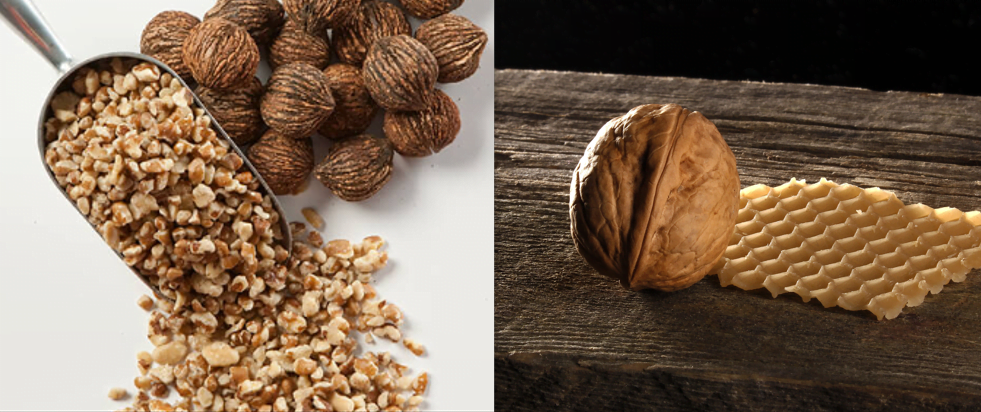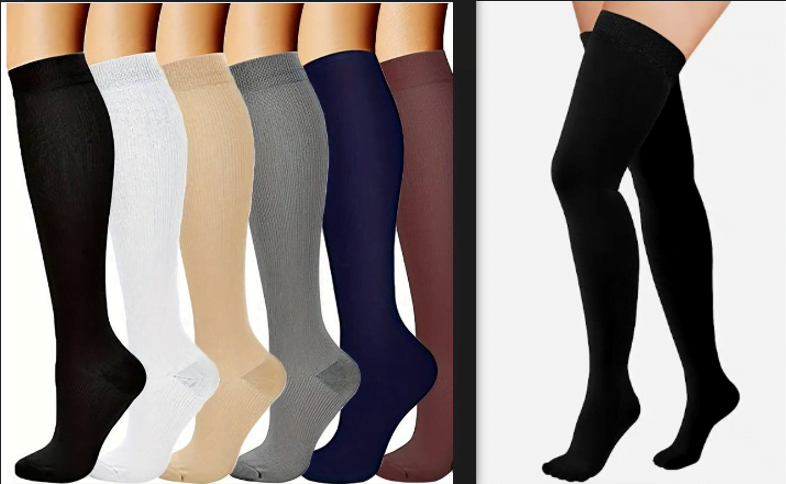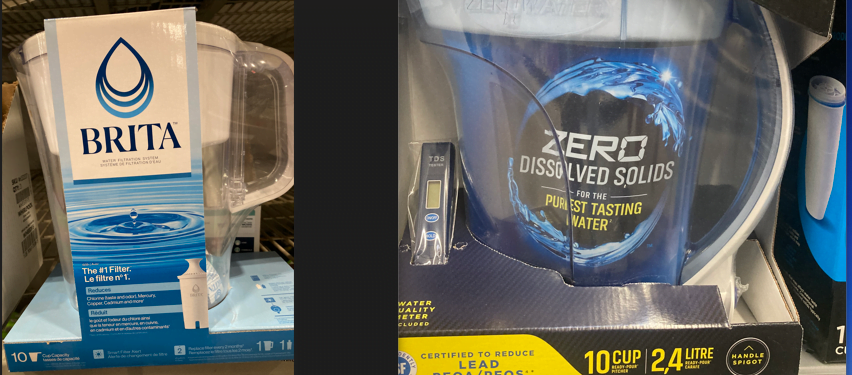Your cart is currently empty!
Category: MIS

Darkfield vs Brightfield Microscopy | Types and Facts
The difference between brightfield and darkfield microscopy is their illumination method, with brightfield using direct light through the specimen for a dark-on-light image and darkfield using light from the sides for a bright-on-dark image. Brightfield requires staining for contrast in transparent samples, whereas darkfield naturally enhances contrast without stains. While brightfield excels at detailing absorbing…

Epsom salt vs Dead sea salt: Health benefits, medication interactions, advantages
Epsom salt, also known as magnesium sulfate, is a chemical compound consisting of magnesium, sulfur, and oxygen. It gets its name from the town of Epsom in Surrey, England, where it was originally discovered. It is not like regular table salt, we normally call it salt because of its chemicals composition. Dead Sea salt is…

Ozempic vs Bariatric Surgery: Advantages and disadvantages
Bariatric surgery tends to lead to more substantial weight loss compared to medications like Ozempic, especially in the long term. However, bariatric surgery also carries higher risks and may not be suitable for everyone, where as medications like Ozempic may be a more accessible option for some individuals. Ozempic (Semaglutide) is a medication used to…

Isolation Gown vs Surgical Gown: 2 types of PPE
An isolation gown is a personal protective equipment (PPE) worn by healthcare professionals to protect themselves and patients from the transfer of microorganisms, body fluids, and particulate matter versus a surgical gown which is a specialized garment worn by healthcare professionals during surgical procedures to provide a barrier between the surgeon or other healthcare workers…

Israeli Bandage vs Tourniquet: advantages & disadvantages, application guide, uses in emergency situation
The Israeli bandage, a combat-proven Trauma dressing, designed to effectively stop blood flow from traumatic hemorrhage wounds during pre-hospital emergency scenarios. A tourniquet is a medical device used to apply pressure to a limb or extremity in order to stop the flow of blood. It is used in emergencies, in surgery, or in post-operative rehabilitation.…

Sorrel (Jamaican sorrel) vs Hibiscus
Sorrel (Roselle) a relative of Hibiscus and Okra, the leaves are lobed and reddish-green and are edible fleshy, bright red cup-like structure contains the plant’s seeds The color and tart, lemony taste of the calyces makes them a good replacement for cranberries. Hibiscus is a diverse flowering plants known for their large, flowers that come…

Day Lilies vs Peace Lilies
Day lily an edible perennial outdoor plant, flowering bloom last only a day vs Peace lily an indoor plant, with air purifying abilities, white flower bloom that last several days. Daylilies (Hemerocallis) a Chinese Vegetable are perennial plants known for their vibrant and diverse blooms, typically lasting for a single day. Peace lilies (Spathiphyllum), on…

Christmas Reindeer Decorations vs Candy Cane
Christmas reindeer decorations focus on the festive representation of Santa’s reindeer, while candy canes focus on a sweet holiday theme, often hung on Christmas trees and are not only tasty but also symbolize the sweetness of the holiday season. Christmas Reindeer Decorations: These are decorations shaped like or inspired by reindeer, which are the animals…

Parsnip root vs Parsley root
Parsnip root is cream-colored, cylindrical, and can grow long, with small root hairs or wrinkles. The parsley root has a more flattened, bulbous shape compared to the elongated taproot of a parsnip. The color of parsley root can range from pale beige to off-white, and it often has a smoother, less wrinkled skin compared to…

Zucchini Leaves vs Pumpkin Leaves Can you Eat these?
Zucchini leaves and pumpkin leaves differ in appearance and texture. Zucchini leaves are typically broader and smoother, with a deep green color and a slightly fuzzy texture on the underside. They are often heart-shaped and have prominent veins. On the other hand, pumpkin leaves are larger, more jagged, and have a rough, almost prickly texture.…

Black Walnut vs English walnut
Black Walnut (Juglans nigra) have a thick, hard shell that is difficult to crack. The flavor is bold and distinctive, often described as rich and earthy while English Walnut (Juglans regia) have a thinner shell that is easier to crack than black walnuts. The flavor is milder and sweeter than black walnuts, making them a…

Compression Sock vs Compression Stocking
Compression socks reaches below the knee, provide graduate pressure to support venous return, alleviate discomfort associated with edema and varicose vein. Compression stocking extend above the knee up the thigh ,used for more severe venous insufficiencies or post-operative recovery, promote better blood flow from the lower extremities back to the heart and prevent clots in…

Christmas Tree Spruce vs Fir
Spruce needles sharp-pointed, square in shape, can be easily rolled between your fingers, Fir needles are softer, flat, resist rolling between your fingers. Additionally, spruce needles are affixed to small, stalk-like woody projections. The choice between a spruce and a fir for a Christmas tree often comes down to personal preference, as both types of…

Pergola vs Pavilion vs Gazebo
Pergolas, pavilions, and gazebos stand as quintessential elements in the realm of outdoor architecture, each weaving its own tale of charm and purpose. The pergola, with its inviting lattice adorned by climbing flora, extends a warm embrace to gatherings beneath dappled sunlight. Pavilions, robust and sheltering, beckon with open arms to host events, striking a…

Cotton Bed Sheet VS Polyester Sheet
Cotton and polyester are two distinct types of fabrics frequently utilized in the textile industry. Cotton, a natural fiber obtained from the seedpod of the cotton plant, is renowned for its breathability, absorbency, and comfort against the skin. On the other hand, polyester is a synthetic fiber crafted from petroleum-based polymers, valued for its robustness,…

Polyester fabric vs Satin fabric
Polyester and satin, though seemingly worlds apart in texture and composition, share a common thread in the intricate tapestry of textile history. Polyester, born of scientific ingenuity and industrial progress, is a synthetic marvel, engineered to mimic the luxurious feel of natural fibers while offering enhanced durability and affordability. Its creation marked a turning point…

Dermabond vs liquid bandage
Dermabond and liquid bandage are both popular choices for wound closure, each offering distinct advantages depending on the situation. Dermabond, also known as surgical glue, is a medical-grade adhesive designed for deeper, surgical wounds. It forms a strong, flexible bond that holds wound edges together, promoting efficient healing and minimizing scarring. Dermabond is often used…

Brita vs PUR Water Filter
Brita and PUR are two popular brands that manufacture water filtration products designed to improve the taste and quality of tap water. Brita uses activated carbon filters to attract and hold impurities like chlorine, sediment, and heavy metals in water. While PUR combines activated carbon filters and ion exchange tech to both adsorb impurities, such…

Cotton vs Polyester fabric
Cotton and polyester are two distinct types of fabrics commonly used in the textile industry. Cotton is a natural fiber derived from the seedpod of the cotton plant, known for its breathability, absorbency, and comfort against the skin. In contrast, polyester is a synthetic fiber made from petroleum-based polymers, prized for its durability, resistance to…

Clean Air Filter vs Dirty Air Filter
Clean filter effectively captures dust, pollen, mold spores, pet dander, and other airborne particles, promoting unrestricted airflow for optimal HVAC system performance and energy efficiency. This results in improved indoor air quality, creating a healthier living environment. A dirty air filter becomes less effective in capturing particles as it collects dirt and debris, allowing more…

Halloween vs Christmas
Halloween and Christmas are two widely celebrated holidays with distinct themes, traditions, and cultural significance. Halloween is associated with themes of spookiness, the supernatural, and sometimes a touch of the macabre. It’s a time when people enjoy a bit of scare in a fun and safe way. On the other hand, Christmas is all about…

Christmas vs Thanks Giving
Christmas and Thanksgiving, though distinct in their essence, share a common thread of gratitude and celebration. Thanksgiving, with its crisp autumn air and bountiful feasts, ushers in a season of reflection and appreciation for the harvest’s yield and the cherished bonds of family and community. It’s a time when hearts swell with thanks, echoing the…

Brita pitcher filter vs Zero Water pitcher filter
Brita specializes in water filtration by using a carbon filtration process that uses activated carbon filters that reduce contaminants and impurities in the water vs Zero water use a multi-stage filtration process that involve ion exchange, Activated Carbon, Microfiltration and reverse Osmosis to remove impurities from water. This process typically involves several layers of different…

Mastisol vs Dermabond
Both Mastisol and Dermabond are liquid adhesive solutions used in medical settings to secure wound closures and provide a protective barrier over the skin. While they serve similar purposes, they have distinct properties and applications. Mastisol and Dermabond are two essential medical products that play pivotal roles in wound closure and skin adhesion within the…

Christmas tree Real vs Fake
The choice between a real and a fake Christmas tree depends on personal preferences, lifestyle, and environmental considerations. Real Christmas trees are harvested plants with a natural appearance, pleasant scent, and environmental benefits if sourced sustainably. They have a limited lifespan and require maintenance. Fake trees are made of non-renewable materials, lack the natural variations…

Filter water vs distilled water
Water is essential for life, and the quality of the water we consume can have a profound impact on our health and well-being. Today, we’re here to explore two common purification methods: filtration and distillation. While both aim to provide us with clean, safe drinking water, they do so through distinct processes, each with its…